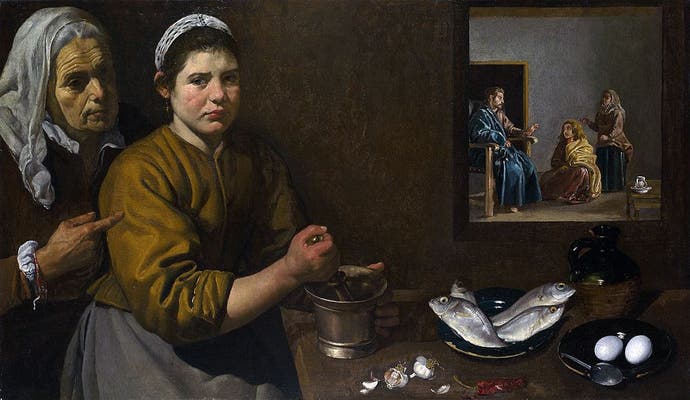The historical precedent for video game demo melons
Delicious!
I saw a bit of the new COD the other day. It was fine. Fighting through the streets, going silent with one of those contraptions on the end of a gun barrel. But then: a marketplace, or the remains of it. And what's this? Watermelons!
Reader, I am emphatically here for watermelons in video games. Watermelons always mean someone is showing off physics - look at the way they bounce around! - or animation - look at the way they come apart! (Third option is it's Yoshi's Island, but that's literally all three options covered.) Watermelons are always extra-curricular, a little bit of interaction to enjoy between headshots. More than that, that phrase "showing off" is never far away. Watermelons are where the tech gets to shine.
Demo melons are brilliant aren't they? Being sliced up in Metal Gear Rising, rolling and scattering in John Woo's Stranglehold. I would argue that they are something unique to video games - video games are the only form that shows off in this particular way. But the more I think about this, the more I realise this isn't true. Demo melons have roots that go way back into art history. (Melons have roots, don't they?)
Anyway, this is Christ in the House of Martha and Mary, by Diego Velazquez. Painted in 1618, it's one of his early numbers. Lovely isn't it?

I'm picking this one because you can actually go and see it in the National Gallery if you fancy, but really any of a number of his early works would do - and plenty of other painters were doing the same stuff anyway. Ignore the faces. Ignore the figures and the strange picture-in-picture staging (Velazquez would riff on this idea for years). Instead, look at the worktop. Those fish! Those beautiful scaly fish! Those eggs! That garlic with its delicate papery skin. That chilli pepper suggesting trade with the new world was already changing the way people ate.
Velazquez spent a lot of time on those fish and those eggs. He must have laboured over that chilli, and I have absolutely no idea how anyone could paint garlic as well as this. And this was absolutely the point. In a way, it may have been the point of this painting, and a handful of others he did like it. He's showing off how good he is with paint. He's showing a mastery of oils and colour and lighting and composition, showing how good he is at creating an illusion. And he's doing it all with fish and eggs and veg. The things we all know about, know how they look, and have certain expectations as to their representation.
We don't really think of artists as being concerned with this sort of stuff. At least I don't. I want to think about the meaning, whatever that means. I want to imagine the painting is a puzzle and you have to be clever to get it.
But oil painting was technology. And artists were tradespeople, entrepreneurs, people who wanted to be paid. Painting could be advertising, the way that demo melons in a video game are advertising. Look how good I am at this stuff! Look how close to something real this is.
In the past I have sometimes fallen into the trap of thinking that games are too commercial to be art. But art history actually gets richer for me when I realise how commercial art has always been. You can be transcendent while also paying the bills. And sometimes all it takes to remind me of this are a few groceries.

